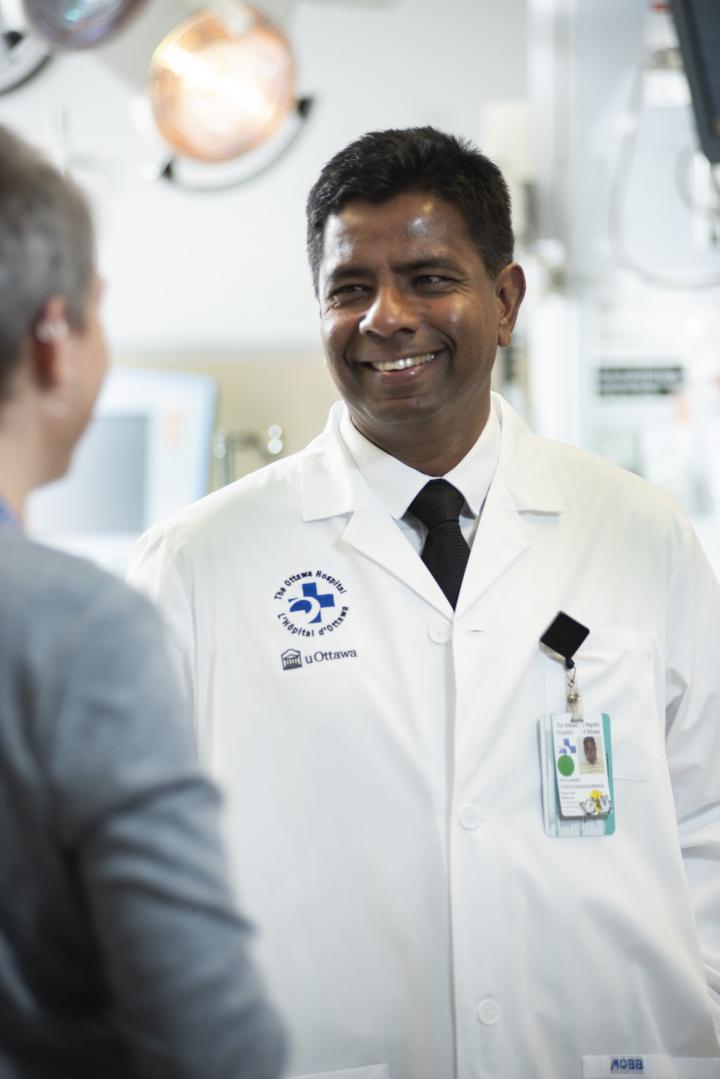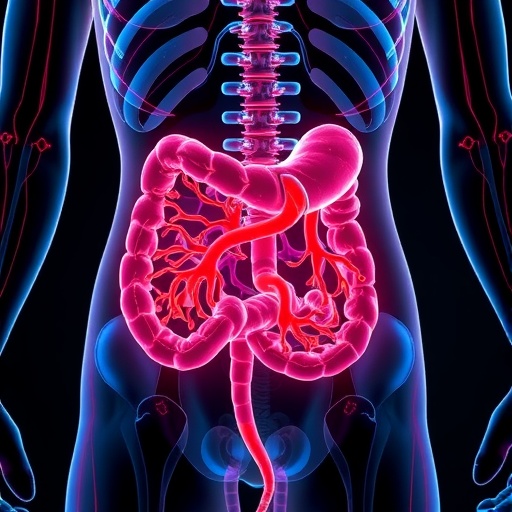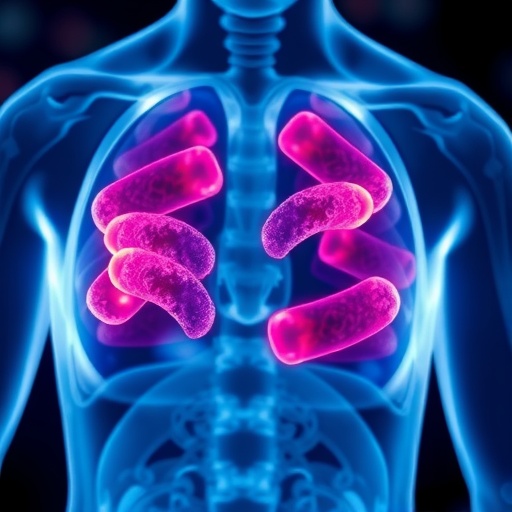Study reveals best ways to catch life-threatening conditions

Credit: The Ottawa Hospital
For the first time, physicians in the Emergency Department (ED) have evidence-based recommendations on how best to catch the life-threatening conditions that make some people faint. New research published in Circulation suggests that low-risk patients can be safely sent home by a physician after spending two hours in the ED, and medium and high-risk patients can be sent home after six hours if no danger signals are detected.
Most of the time fainting is harmless, but a small percentage of people faint due to serious medical conditions, such as an irregular heartbeat, or arrhythmia. These arrhythmias usually come and go quickly, and the person’s heart rhythm returns to normal by the time the ambulance arrives or they reach the ED. Fear of these arrhythmias coming back have led to patients being kept in the ED for eight to 12 hours. Approximately half of all patients who are hospitalized for fainting across Canada are admitted so their heart rhythm can be monitored. However, only a small proportion of patients will experience a dangerous irregular heartbeat, heart attack or death within a month of fainting.
“Before this study we didn’t know which fainting patients needed to be monitored in the Emergency Department, and how long they needed to be monitored. We didn’t know who needed to be hospitalized in order to catch life-threatening conditions. Now we have answers to these questions that will help improve patient care, and potentially reduce ED wait times and hospital admissions.” said lead author Dr. Venkatesh Thiruganasambandamoorthy, an emergency physician and scientist at The Ottawa Hospital and associate professor at the University of Ottawa.
Dr. Thiruganasambandamoorthy’s team previously created a simple tool to help emergency physicians identify those fainting patients who are at greater risk of adverse events. In this observational study, they used the tool to rank 5,581 patients from six EDs across Canada as low (0.4 percent risk of an arrhythmia within 30 days), medium (8.7 percent) or high risk (25.3 percent).
Out of the 5,581 people, 74 percent were classified as low-risk, 19 percent as medium-risk and 7 percent as high-risk. One month after fainting, 3.7 percent of individuals (207) suffered an arrhythmia.
The team found that half of the arrhythmias were identified within the first two hours of arrival at the ED for low-risk patients, and within six hours for the medium and high-risk patients. They also found that 92 percent of the underlying arrhythmias were identified within 15-days among the medium and high-risk patients.
“We learned that irregular heartbeat called arrhythmias usually happen soon after fainting” said Dr. Thiruganasambandamoorthy. “This means we can catch most of these events in those first few hours in the Emergency Department, where we can quickly give people the treatment they need. The types of arrhythmias that
medium-risk patients suffer are important but non-life threatening, so these patients can be monitored from the comfort of their homes. A few days in hospital can be considered for high-risk patients.”
Low-risk patients, the majority of fainting patients, can be discharged home after two hours without further heart rhythm monitoring. After six hours have passed for medium and high-risk patients, a physician can decide whether to admit them to hospital while considering their overall health, ability to cope at home, injuries and need for further monitoring. The research team found that medium and high-risk patients benefit from home heart rhythm monitoring for 15 days, which should ideally start when they leave the ED.
“Our study suggests that three quarters of the 200,000 fainting patients who come to Canadian Emergency Departments every year are at low risk of adverse events. They can safely be sent home once they’ve been in the ED two hours and a physician sees them.” said Dr. Thiruganasambandamoorthy.
Researchers at The Ottawa Hospital are known around the world for creating decision rules that improve patient care.
The study was funded by the Physicians’ Services Incorporated Foundation, Innovation Fund for Academic Health Sciences Centres of Ontario through The Ottawa Hospital Academic Medical Organization, the Canadian Institutes of Health Research, Heart and Stroke Foundation of Canada, and the Cardiac Arrhythmia Network of Canada.
Research like this is possible because of generous support for research to improve patient care at The Ottawa Hospital. It was also supported by The Ottawa Hospital’s Ottawa Method’s Centre.
###
Full reference: Duration of Electrocardiographic Monitoring of Emergency Department Patients with Syncope. Venkatesh Thiruganasambandamoorthy, Brian H. Rowe, Marco L.A. Sivilotti, Andrew D. McRae, Kirtana Arcot, Marie-Joe Nemnom, Longlong Huang, Muhammad Mukarram, Andrew D. Krahn,George A.Wells, Monica Taljaard. Circulation. Jan 21, 2019.
About The Ottawa Hospital: Inspired by research. Driven by compassion.
The Ottawa Hospital is one of Canada’s largest learning and research hospitals with over 1,100 beds, approximately 12,000 staff and an annual budget of over $1.2 billion. Our focus on research and learning helps us develop new and innovative ways to treat patients and improve care. As a multi-campus hospital, affiliated with the University of Ottawa, we deliver specialized care to the Eastern Ontario region, but our techniques and research discoveries are adopted around the world. We engage the community at all levels to support our vision for better patient care. See http://www.
University of Ottawa: –A crossroads of cultures and ideas
The University of Ottawa is home to over 50,000 students, faculty and staff, who live, work and study in both French and English. Our campus is a crossroads of cultures and ideas, where bold minds come together to inspire game-changing ideas. We are one of Canada’s top 10 research universities–our professors and researchers explore new approaches to today’s challenges. One of a handful of Canadian universities ranked among the top 200 in the world, we attract exceptional thinkers and welcome diverse perspectives from across the globe. http://www.
Media Contact: Amelia Buchanan, Senior Communication Specialist, Ottawa Hospital Research Institute; [email protected]; Office: 613-798-5555 x 73687; Cell: 613-297-8315
Media Contact
Amelia Buchanan
[email protected]
613-297-8315




